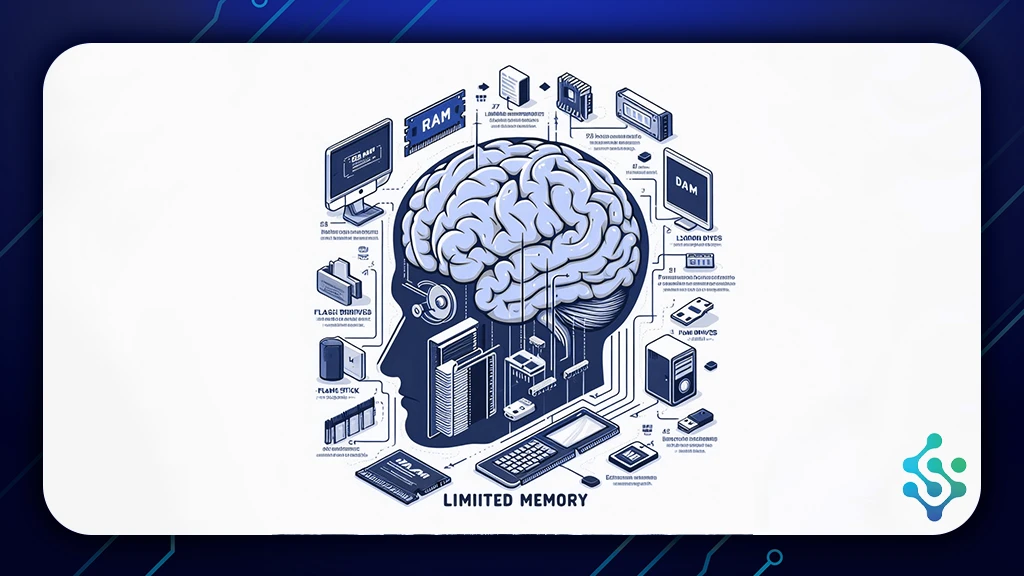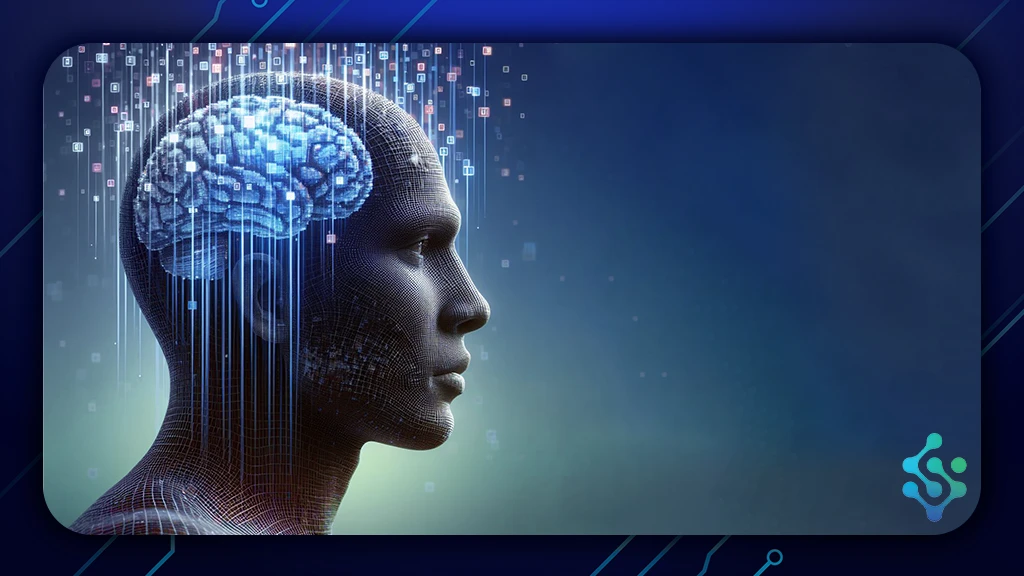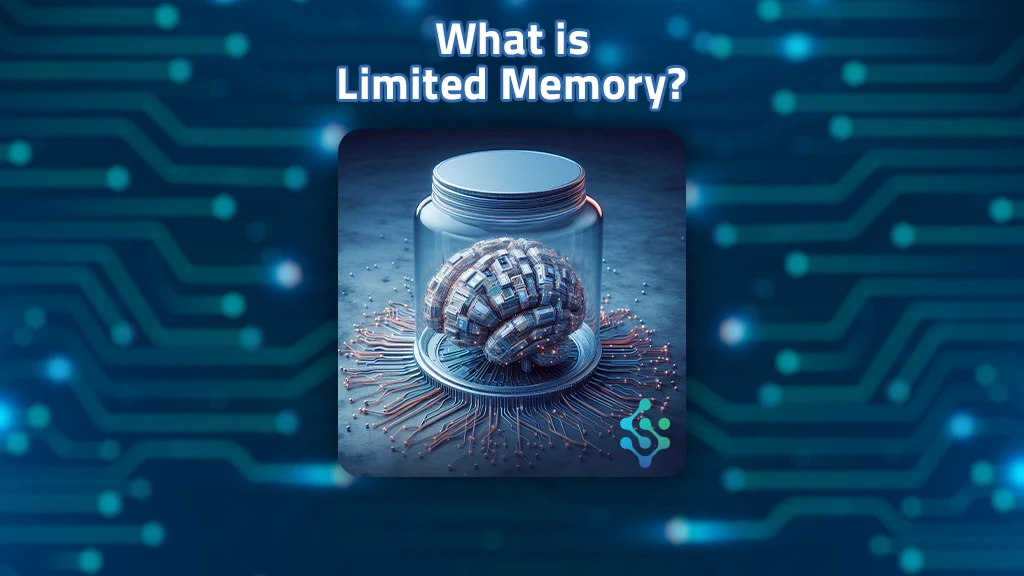In the intricate realm of artificial intelligence, Limited Memory AI, also known as Limited Memory, unveils a nuanced dimension to computational capabilities. Unlike its counterpart, Reactive Machines, which operate solely on immediate inputs without internal recollection, Limited Memory AI introduces a fundamental shift by incorporating a rudimentary form of memory to enrich decision-making and adaptability. This unique paradigm empowers AI systems to retain a finite set of past experiences or data, thereby enabling them to consider recent information when processing current inputs. Although the memory capacity of Limited Memory AI is not as extensive as that found in more advanced AI architectures, it strikes an essential balance between reactive responsiveness and adaptive learning, offering increased sophistication in problem-solving and interaction.
What is the Characteristic of Limited Memory?
Limited Memory AI systems exhibit a distinctive characteristic rooted in their capacity to retain and utilize a limited set of past experiences or data to inform present decisions. Unlike Reactive Machines, which operate solely on immediate inputs, Limited Memory AI introduces a rudimentary memory structure that enables it to incorporate recent insights when analyzing current stimuli. This limited theory of memory furnishes AI systems with nuanced behavioral responses, allowing them to adapt and evolve based on past interactions. While not as extensive as the memory capabilities found in more advanced AI architectures, Limited Memory AI strikes a harmonious equilibrium between reactive responsiveness and adaptive learning, ushering in heightened sophistication in problem-solving and interactive capabilities.

What Are Examples of Limited Memory?
Limited Memory AI systems, while not as memory-intensive as some advanced AI architectures, introduce a critical intermediary between reactive responsiveness and adaptive learning. Here are some illustrative examples showcasing the practical applications of Limited Memory AI:
Personal Assistants: Limited Memory AI is often employed in personal assistant applications to enhance user experiences. These AI systems retain a limited history of user interactions and preferences, allowing them to tailor responses and recommendations based on past interactions. For example, virtual assistants like Apple’s Siri or Amazon’s Alexa utilize limited memory to remember user preferences, such as preferred music genres or frequently visited locations, to provide more personalized assistance over time.
Online Shopping Recommendations: E-commerce platforms leverage Limited Memory AI algorithms to enhance product recommendations for users. By analyzing past purchase history and browsing behavior, these systems can suggest relevant products that align with the user’s preferences and past interactions. For instance, platforms like Amazon or Netflix use limited memory to remember past purchases or viewed items, enabling them to deliver more accurate and personalized recommendations to users.
Navigation Systems: Limited Memory AI plays a crucial role in navigation systems, particularly in GPS applications. These systems retain a limited history of routes and destinations, allowing them to optimize travel routes based on past user preferences and traffic patterns. For example, navigation apps like Google Maps or Waze utilize limited memory to remember frequently traveled routes and preferred destinations, providing more efficient and personalized navigation guidance to users.
Email Filtering: Email filtering systems leverage Limited Memory AI to enhance spam detection and email categorization. By analyzing past email interactions and user preferences, these systems can classify incoming emails as spam or important based on past behavior. For instance, email providers like Gmail use limited memory to remember user interactions with emails, enabling them to filter out unwanted spam messages and prioritize important emails for users.
Health Monitoring Wearables: Limited Memory AI is increasingly being used in health monitoring wearables to track and analyze user health data. These devices retain a limited history of physiological metrics and activity levels, allowing them to detect patterns and anomalies in user health over time. For example, fitness trackers like Fitbit or Apple Watch utilize limited memory to remember past heart rate fluctuations or exercise patterns, enabling them to provide personalized insights and recommendations to users for improved health and fitness.
Is ChatGPT a Limited Memory AI?
In the realm of artificial intelligence, the classification of ChatGPT as a Limited Memory AI sparks intriguing debates among AI enthusiasts and researchers alike. While ChatGPT undoubtedly possesses a form of memory, it operates on a different paradigm compared to traditional Limited Memory AI architectures.
ChatGPT, developed by OpenAI, is renowned for its remarkable conversational abilities, capable of generating coherent and contextually relevant responses in natural language. This proficiency stems from its underlying architecture—a deep learning-based language model trained on vast amounts of text data from the internet. Through this extensive training, ChatGPT learns to understand language patterns, context, and semantics, enabling it to produce human-like responses in conversations.
However, the crucial distinction lies in the nature of ChatGPT’s memory. Unlike dedicated Limited Memory AI systems designed with explicit memory constraints and mechanisms for retaining past experiences, ChatGPT’s memory is inherently transient and context-specific. While it can maintain information from previous steps in a conversation to some extent, this memory is relatively short-lived and primarily serves to enhance coherence within the ongoing dialogue.
In essence, while ChatGPT incorporates elements of memory to facilitate conversation flow and context retention, it lacks the sophisticated memory structures characteristic of traditional Limited Memory AI architectures. Instead, it operates as a language model optimized for generating responses based on immediate input context and learned language patterns.
Thus, while ChatGPT’s memory capabilities contribute to its conversational prowess, it doesn’t align neatly with the conventional definition of Limited Memory AI. Rather, it represents a unique blend of deep learning-based language processing and context-awareness, offering a glimpse into the evolving landscape of AI-driven natural language understanding and generation.

Limited Memory and Limited Theory
Limited Memory and Limited Theory AI systems represent a fascinating frontier in the realm of artificial intelligence, poised to shape the future of intelligent computing. As advancements in machine learning and cognitive science continue to unfold, the evolution of these systems holds promise for enhancing AI capabilities in nuanced ways. The future of Limited Memory AI lies in the refinement of memory architectures, enabling AI systems to retain and leverage past experiences more effectively while maintaining efficiency and scalability. Through innovations in neural network architectures, memory management techniques, and hybrid models combining Limited Memory with other AI paradigms, such as deep learning and reinforcement learning, we can expect to see AI systems that exhibit greater context awareness and adaptive behavior across diverse tasks and domains. Furthermore, the integration of Limited Theory principles into AI models opens new avenues for understanding and simulating human cognition, paving the way for AI systems that can reason, infer, and learn from limited information with greater accuracy and robustness.
In conclusion, Limited Memory and Limited Theory AI represent not only technological advancements but also insights into the nature of intelligence itself. As researchers and developers continue to explore the capabilities and limitations of these AI paradigms, we anticipate a future where AI systems can emulate human-like memory and reasoning to a greater extent, leading to more sophisticated and versatile applications across various industries and domains. By embracing the principles of Limited Memory and Limited Theory, we can harness the full potential of AI to tackle complex problems, augment human capabilities, and drive innovation towards a smarter and more connected world.


No comment